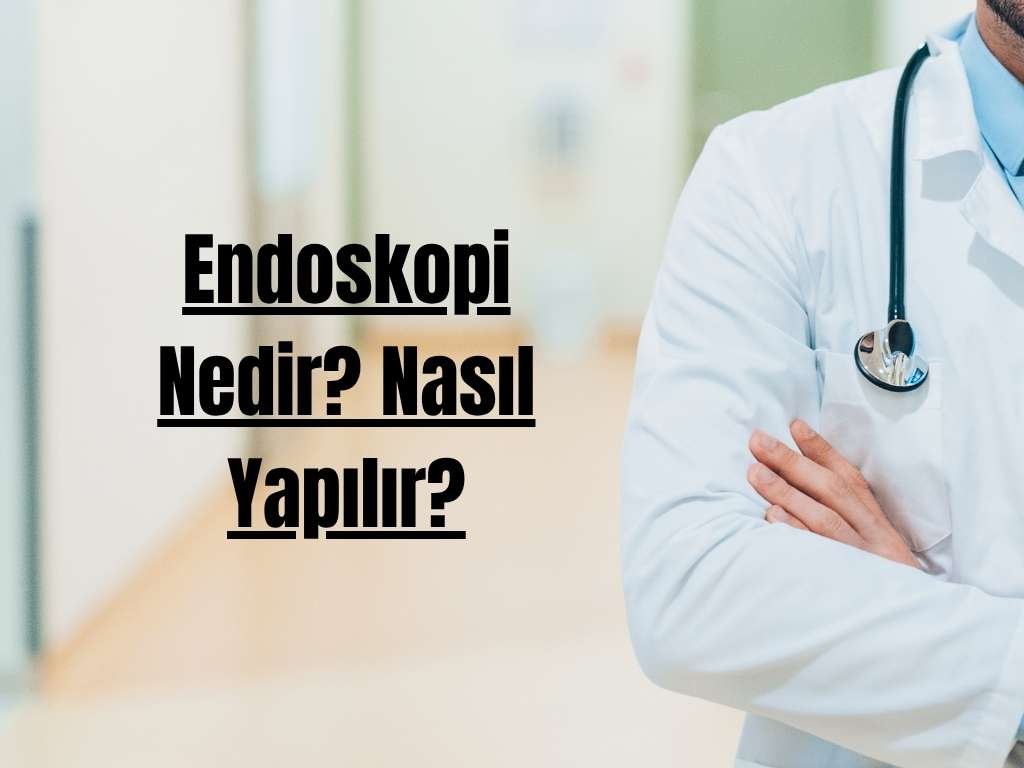What is Endoscopy? How is it Performed?
Endoscopy is a modern diagnostic and sometimes therapeutic method that allows direct visualization of internal organs and body cavities. During the procedure, a flexible, thin tube equipped with a camera—called an endoscope—is gently inserted into body cavities. The obtained images can be viewed and recorded in high resolution via monitors.
What is Endoscopy?
Developed with the opportunities provided by modern medical technology, endoscopy is one of the most reliable methods for visualizing internal organs. It enables early diagnosis of diseases, allows for immediate intervention in some cases, and helps avoid major surgical procedures. This procedure not only improves patients’ quality of life but also facilitates the management of many diseases.
Endoscopy can be applied to many different organs and systems. Although it is most commonly used for the gastrointestinal system, it can also be employed to examine the respiratory tract, urinary tract, joints, and even sinuses.
Areas of Use
| Application Area | Description |
|---|---|
| Upper Gastrointestinal Tract | Examines the esophagus, stomach, and duodenum (Gastroscopy). |
| Lower Gastrointestinal Tract | Examines the rectum and large intestine (Colonoscopy – not covered in this article). |
| Respiratory Tract | Examines the lungs and bronchi (Bronchoscopy). |
| Urinary Tract | Evaluates the bladder and urethra (Cystoscopy). |
| Joint Cavities | Examines the knees and other joints (Arthroscopy). |
| Ear-Nose-Throat | Evaluates the sinuses, vocal cords, and nasal cavities (Nasal Endoscopy). |
How is Endoscopy Performed?
Before the procedure, patients are usually informed in detail, and necessary preparations are made. To increase comfort during the procedure, sedation or local anesthesia may be administered.
Procedure Steps:
- Preparation: The patient may be required to fast for a certain period. Specific preparations may be requested depending on the type of endoscopy to be performed.
- Positioning: The patient is positioned appropriately.
- Endoscope Insertion: The endoscope is gently guided into the body via the mouth, nose, urethra, or a small incision.
- Imaging: The internal structures of organs are observed in detail using the camera.
- Intervention if Necessary: Procedures such as biopsy, polyp removal, or bleeding control can be performed.
- Completion: The endoscope is carefully removed, and the patient is placed under observation.
How Long Does an Endoscopy Take?
The duration of the procedure varies depending on the area examined and the type of intervention. Average durations are summarized below:
| Type of Endoscopy | Average Duration |
|---|---|
| Gastroscopy (Upper GI Tract) | 10 – 20 minutes |
| Bronchoscopy (Respiratory Tract) | 20 – 40 minutes |
| Cystoscopy (Bladder Exam) | 15 – 30 minutes |
| Arthroscopy (Joint Exam) | 30 – 60 minutes |
| Nasal Endoscopy (Nose & Sinuses) | 5 – 15 minutes |
There may be a short observation period following the procedure. For patients who receive sedation, it is recommended not to drive and to return home accompanied by a companion.
Average Endoscopy Prices in 2025
Endoscopy costs vary depending on the medical facility, technology used, the type of procedure, and country. As of 2025, the average prices in private healthcare institutions in Türkiye are as follows:
| Type of Endoscopy | 2025 Average Price (TRY) |
|---|---|
| Gastroscopy | 4,000 – 7,000 TRY |
| Bronchoscopy | 6,000 – 10,000 TRY |
| Cystoscopy | 5,000 – 8,000 TRY |
| Arthroscopy (Diagnostic) | 8,000 – 15,000 TRY |
| Nasal Endoscopy | 2,500 – 4,000 TRY |
Note: In public hospitals, prices may be significantly lower due to social security coverage (SGK). However, factors such as equipment quality, medical expertise, and additional procedures can affect pricing in private clinics.
Advantages
Compared to traditional imaging methods, endoscopy offers several significant advantages:
- Minimally Invasive: Can be performed without surgical incisions.
- Early Diagnosis: Helps detect diseases at early stages.
- Immediate Intervention: Procedures like polyp removal and bleeding control can be performed simultaneously.
- Fast Recovery: Most patients can return to normal life shortly after the procedure.
These benefits make it easier to provide care for many patients.
Post-Procedure Care
There are some basic guidelines that patients should follow after endoscopy:
- Do not drive for 24 hours if sedation was administered.
- Mild throat pain or bloating may occur after the procedure; this is usually temporary.
- Seek immediate medical attention if severe pain, bleeding, or high fever occurs.
- Avoid strenuous physical activity for the period recommended by your doctor.
Who Should Not Undergo Endoscopy?
As with any medical procedure, there are situations where endoscopy may not be appropriate. These include:
- Patients with severe respiratory or heart conditions
- Individuals with bleeding or clotting disorders
- Patients who are physically or psychologically unsuitable for the procedure
Each case should be evaluated individually to determine whether the procedure is appropriate.
Frequently Asked Questions (FAQ)
Is endoscopy a painful procedure?
Generally, no. The procedure is performed under sedation or local anesthesia. Most patients report only mild pressure or discomfort.
How soon can I return to my normal routine after an endoscopy?
A few hours of rest is usually recommended. If sedation was used, rest is necessary until full alertness returns. Most patients can resume normal activities the following day.
Is taking a biopsy during endoscopy dangerous?
No. Biopsies taken during endoscopy are generally very safe and rarely cause complications.
Disclaimer: All content on this site is for informational purposes only and is based on scientific sources available at the time of publication. For any symptoms, diagnosis, or medical treatment, please consult your physician or an authorized healthcare provider.




